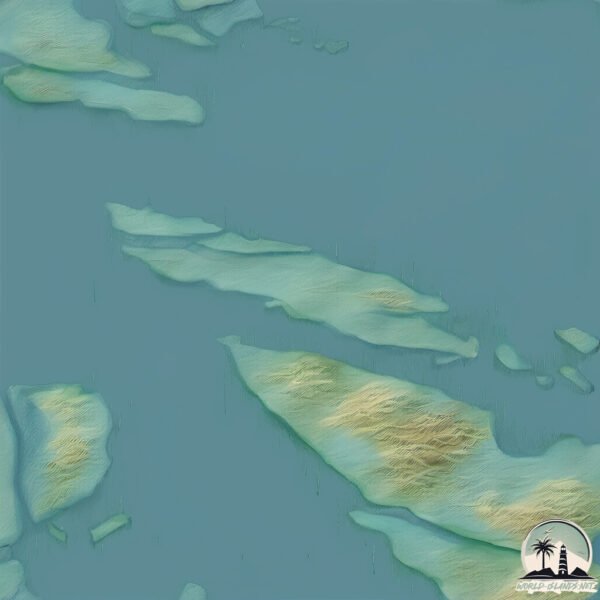Welcome to Wilson , a Polar island in the South Pacific Ocean, part of the majestic Pacific Ocean. This guide offers a comprehensive overview of what makes Wilson unique – from its geography and climate to its population, infrastructure, and beyond. Dive into the details:
Geography and size of Wilson
Size: 10 km²Coastline: 34.9 kmOcean: Pacific OceanSea: South Pacific OceanContinent: South America
Wilson is a Medium Island spanning 10 km² with a coastline of 35 km.
Archipel: –
Tectonic Plate: South America – A major plate covering the South American continent and part of the Atlantic Ocean, known for the Andes mountain range and significant seismic and volcanic activity.
The geographic heart of the island is pinpointed at these coordinates:
Climate and weather of Wilson
Climate Zone: PolarClimate Details: TundraTemperature: Cold
Climate Characteristics: The tundra climate features long, extremely cold winters and short, cool summers. Vegetation is limited to mosses, lichens, and small shrubs due to the low temperatures and short growing seasons. Biodiversity is low, but some specialized species thrive.
Topography and nature of Wilson
Timezone: UTC-04:00Timezone places: America/La_PazMax. Elevation: 104 m Mean Elevation: 40 mVegetation: Evergreen Broadleaf ForestTree Coverage: 73%
The mean elevation is 40 m. The highest elevation on the island reaches approximately 104 meters above sea level. The island is characterized by Plains: Flat, low-lying lands characterized by a maximum elevation of up to 200 meters. On islands, plains are typically coastal lowlands or central flat areas.
Dominating Vegetation: Evergreen Broadleaf Forest
Vegetation: 7 vegetation zones – Very Highly Diverse Island
Infrastructure and Travelling to Wilson
Does the island have a public airport? no .
Does the island have a major port? no .
The mean population of Wilson is 1 per km². Wilson is Uninhabited. The island belongs to Chile .
Continuing your journey, Margarita is the next notable island, situated merely km away.
Adults Only Luxury Glamping At Wilson Island In Great Barrier Reef
Not heard of Wilson Island? Fear not! This slice of paradise is a new island in Great Barrier Reef. An adults only island in Great ...
Adults Only Luxury Glamping At Wilson Island In Great Barrier Reef
Not heard of Wilson Island? Fear not! This slice of paradise is a new ...
Not heard of Wilson Island? Fear not! This slice of paradise is a new island in Great Barrier Reef. An adults only island in Great ...
Things to do on Wilson Island
Wilson Island is an idyllic paradise in the Southern Great Barrier ...
Wilson Island is an idyllic paradise in the Southern Great Barrier Reef just off the coast of Gladstone. It is home to soft white sand ...
Wilson Island, Queensland, Australia
Weekend getaway on Wilson Island.
Weekend getaway on Wilson Island.
Chile is classified as Emerging region: G20: Group of Twenty – Major economies comprising both developed and emerging countries, representing the world’s largest economies. The level of income is Upper middle income.
News – Latest Updates and Headlines from Wilson
Stay informed with the most recent news and important headlines from Wilson. Here’s a roundup of the latest developments.
Loading...
Please note: The data used here has been primarily extracted from satellite readings. Deviations from exact values may occur, particularly regarding the height of elevations and population density. Land area and coastline measurements refer to average values at mean high tide.

